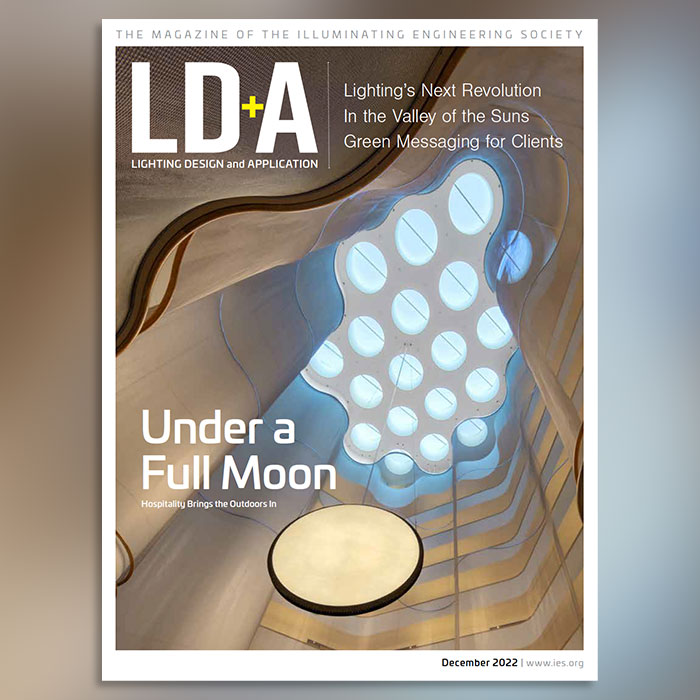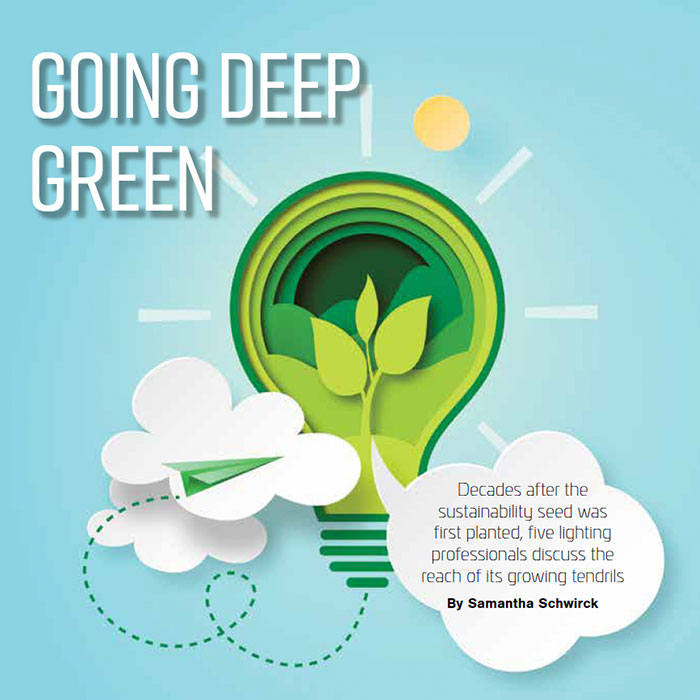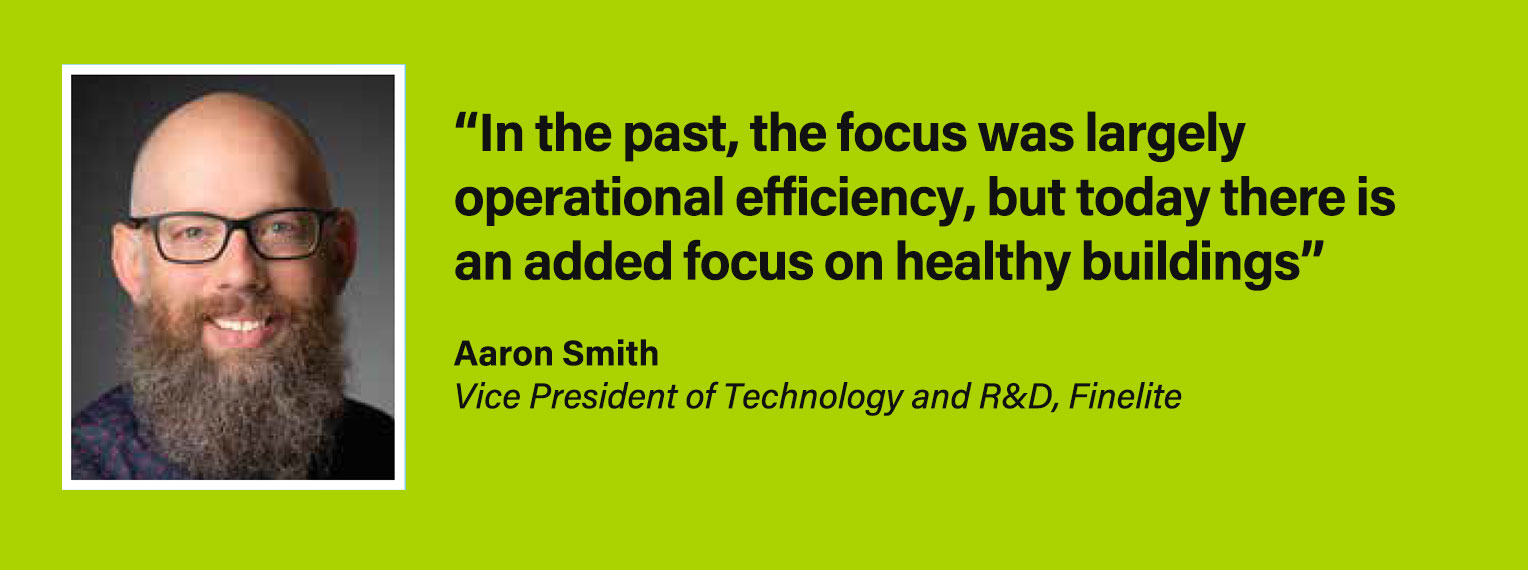
Going Deep Green – LD+A Magazine December 2022
Written By: Samantha Schwirck
Much like LEDs and light & health, sustainability in the lighting industry has, over the years, taken root, grown, evolved, been redefined—and redefined again. All the while, lighting and design professionals have attempted to grapple with the changes.
Today, at least one thing’s for sure: “sustainability” is reaching its tendrils into new and unexpected areas of our lives—and everyone is talking about it. With that, both sides of our industry manufacturers and specifiers must be well-versed in the language of green and ready to share their sustainable bona fides when gathering around the conference table with clients. That’s just one of the resounding messages from the five lighting professionals representing both design and manufacturing viewpoints that we spoke to about current trends. The rest follow here:
Q&A with Aaron Smith – VP of Technology and R&D, Finelite
Current sustainability efforts?
At a high level, there are four big items we are focusing on: (1) promoting diversity and inclusion, (2) reducing our carbon footprint, (3) developing a circular economy and (4) being a responsible company. Specifically, at the product/manufacturing level, we are focused on material transparency (Declare labels), environmental transparency (LCA and EPDs) and CO2 reductions (material and process innovations).
What’s the demand?
Specifiers and design teams have been demanding sustain-ability for a long time. In the past, the focus was largely operational efficiency, but today there is an added focus on healthy buildings, embodied carbon emissions, and diversity and inclusion. The demand for products that can provide this information has increased significantly as more projects are being built to meet various sustainability and social goals. Some projects are participating in programs like WELL, Living Building and LEED, while others simply want to meet their own corporate social responsibility goals. Also, it is not just projects but organizations, like the AIA, who are supporting material pledges and have developed sustain-ability commitments. Leaders in the lighting design community like Sladen Feinstein have developed the Lighting Advocacy Letter to help get the support of the design community to ask lighting manufacturers to develop sustainable lighting products and, in turn, design-ers are committed to updating their specs and giving priority to these manufacturers.

Your take on sustainability buzzwords?
These buzzwords are some of the core sustainability requirements lighting designers and architects need and that’s why they come up so often. Material transparency is all about disclosing the ingredients that go into making a product. There are several ways to disclose this type of information, including in the form of a Declare label, which is a program run by the International Living Futures Institute (ILFI). This is the program we have been getting the most requests for and the one we participate in. The next important buzzword is environmental transparency, and this is all about disclosing the energy that goes into making, operating, maintaining, and recycling or disposing of a product and the impact that energy has on the environment such as carbon emissions. At Finelite, we are participating in research projects looking at the life-cycle cost analysis (LCA) of our products in order to assess the complete energy profile of the manufacturing process from the raw material production to the end-of-life and recycling phases. Life-cycle analysis is important because it allows us to create what’s called an environmental product declaration (EPD), which details the environmental impacts of a product—and is what architects need in order to quantify the impacts of our product on their building projects. The final two buzzwords I’d like to discuss are CSR (corporate social responsibility) and ESG (environmental social governance). Many companies today have documented CSR or ESG goals that publicly disclose a company’s environmental, social and governance policy commitments to investors. Generally, these commitments are audited by a third party so that the companies are encouraged to act responsibly and meet their commitments. The impact of this is that these commitments start influencing the companies’ actions.
Marketing tactics?
We have introduced our sustainability efforts through educational training, industry collaborations, TV appearances, e-blasts and our website. We incorporated specific material transparency options into our catalog code, so they are visible to specifiers. We think that designing and manufacturing sustainability is one of the most innovative things that we can do as a manufacturer today. We’re going to continue to make it easier for specifiers to use healthy, sustainable products on their projects, and easier for them to have the data at their fingertips.
- Log in to post comments